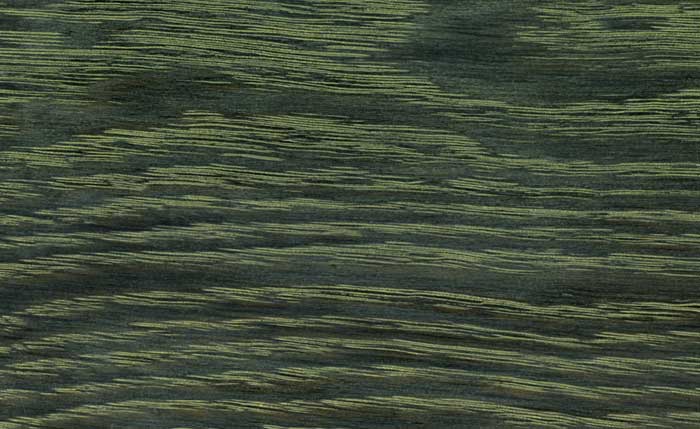Grain filling is optional. It depends on whether or not you want a flat surface (filled) or you are happy for the open texture to remain (unfilled). As far as colour is concerned, if you decide to grain fill, it's down to personal choice. You can do wildly contrasting if you like, as in the image below which is oak dyed with ferrous sulphate followed by a layer of polish and then the grain filled, believe it or not, with green water based emulsion paint.
Most of the time the choice is to try and match the surrounding wood colour, whether dyed, stained, or natural, but if that's the general aim it's usually best to go for a filler that's a shade or two lighter. So, if the oak is a mid-brown, aim for a filler that's a slightly lighter mid-brown. You can adjust the filler colour through the use of earth pigments. You can even start with white grain filler and adjust the colour through adding any of the earth pigments you want to get the shade, tone and hue you require, and an appropriate solvent to keep the filler thin enough to be workable.
And to respond to your last question, you can apply filler to bare wood, wood that's been coloured, or to wood (natural or coloured) that's had a sealing coat of polish. In the example below, remember, there was a coat of lacquer between dying the wood and filling the grain. Without the polish the green filler would not have been restricted quite so much to the wood's open pores. It's neither right or wrong to polish or not polish before grain filling, and it depends on the look you want. The only real option is to experiment with different finishing routines on scraps until you get a look that satisfies you, then replicate it on the table itself.
Incidentally, most of the time grain filling is only undertaken on large flat surfaces, and small fiddly bits are usually left unfilled. In your case, for example, it's quite common to fill the table top but not bother filling the legs, rails and any stretchers, but again, that's down to the look you're after, and your patience to complete what can be quite a fiddly and time consuming task. Slainte.




